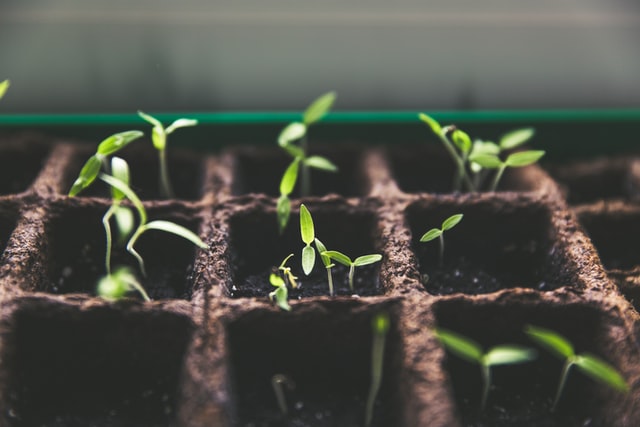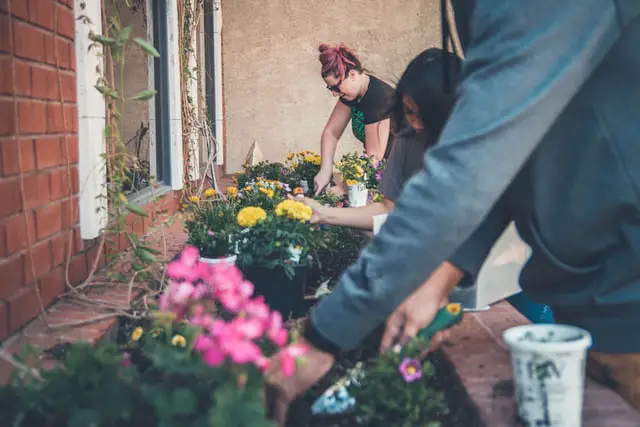If you are growing plants in your garden or your home, you surely want your plants to grow bigger and healthier, then you should consider reading through this article. Here in this article, we’ll be going through ways to make your plants grow bigger and healthier.
There are many things to be done to help your plants grow bigger and healthier. Among all, a favorable atmosphere is required for the healthy growth of plants. Aside from that, adequate light and water are necessities of a plant. Keep reading to discover other ways to help in the healthy development of your plants.
-
The Right Soil Is Needed
As we all know, we cannot have healthy and robust plants growing out of the wrong soil. To grow a healthy plant, your soil should be fertile enough, loamy, and with an adequate pH. One honest review from simplegrowsoil.com pointed out that with healthy soil, you will be able to grow strong, healthy, and productive plants. Also, if you intend to use chemical treatments for your soil, consider using organic soil for a favorable result.
-
Choose The Right Plants
Liking a particular plant is not enough reason to also grow it successfully in your garden. When choosing plants, don’t just look at the attractiveness alone. You should also weigh it to the current planting conditions. Choose plants that can cope in all conditions concerning moisture, light, drainage, etc. Also, choose pest and disease-resistant plants to ensure healthy growth.
-
Properly Space Out Your Plants

When planting, proper spacing of plants is important. Without a doubt, it’s among the crucial factors contributing to the healthy growth of plants. Of course, every plant has a spacing requirement of its own, but tips like adequate air circulation or using a larger pot for most of us using container gardens should be considered. You should also consider grouping low-growing plants in beds you don’t walk on.
Properly grouping plants will also make way for a reduced weeding and water wastage. Also, it makes way for an easier path. However, as plants need proper air circulation, there should be enough space between rows. It also guards your plants against fungal attacks. If you are short of time and want favorable returns from your plants, you should consider planting crops like old pole beans and tomatoes in containers.
-
Look Out For Bugs
The damages that insects pose on our plants are worse than you could hear of. The virus makes its way into plants through openings that bugs make. Some insects also transport viruses, circulating them from a plant to another. Common carriers such as aphids circulate virus, which has been bothering commercial producers over these years. Leafhoppers carry a disease known as aster yellow and attack a variety of plants. A plant can undergo stress which hinders healthy growth all because of insect attacks.
-
Fertilize Your Plants Adequately
You should be extremely careful when fertilizing your plants as excess fertilizers can damage plants’ roots, hindering them from absorbing water for their growth. In turn, this makes plants prone to stress due to lack of water, heat, or cold. Nutrient-deprived plants are smaller and are mostly affected by leaf spots, while on the other hand, healthy plants can combat diseases. However, the excess presence of a nutrient is another factor stressing plants.
With a soil test from your local agency, you will get an accurate result of the nutrient levels of your soil. Aside from that, feeding your plant is based on guesswork and may lead to the excess presence of a particular nutrient or the lack of a nutrient.
-
Water The Plants Regularly
Watering your plants regularly is an important factor you should consider for the healthy growth of your plants. However, watering your plants does not necessarily mean wetting them. Every plant has a water requirement, but there’s a basic approach to be considered: avoid over-watering or under-watering your plants. You should also know the best time to water your plants, usually in the morning, which is the cool time of the day without heavy winds.
As a result of that, the amount of water being evaporated is reduced. But watering your plants in the evening might remain stagnant overnight, increasing the risk of damage to the plants by fungal attacks.
For growing strong and healthy plants, you should consider the planting position of the plants. You should choose an area with adequate sunlight. Also, don’t forget about the proper drainage of the planting position. If you grow your plants in containers, consider making proper drainage holes at the bottom of your containers or pots.




